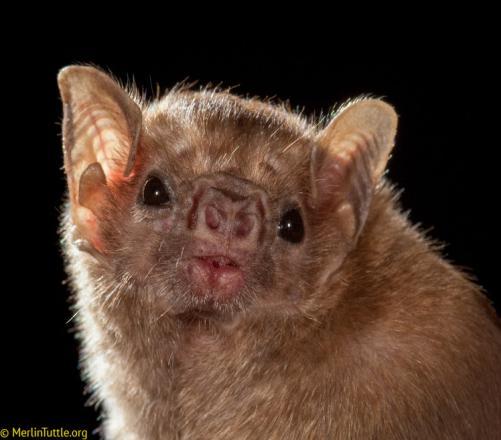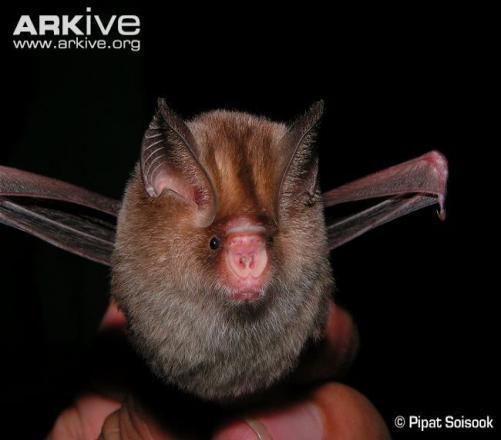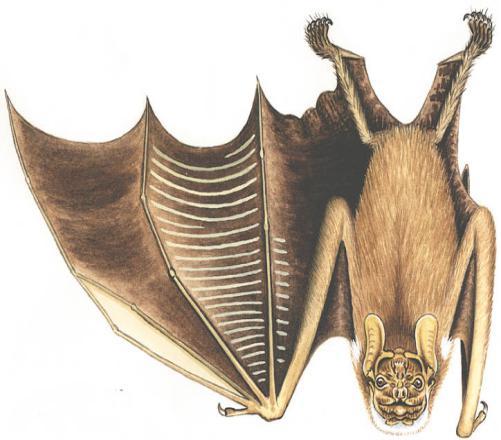What Do You Know About The Cuban Greater Funnel-eared Bat?

The Cuban Greater Funnel-Eared Bat is a species of bat characteristically known for their funnel-like ear. This quiz tests knowledge of their history, morphology etc.
- 1.
What is the scientific name of the Cuban Greater Funnel-Eared Bat?
- A.
Crium diris
- B.
Niridis folis
- C.
Natalus primus
- D.
Bimus satis
Correct Answer
C. Natalus primusExplanation
The scientific name of an organism is a unique binomial name that consists of the genus and species names. In this case, the correct answer "Natalus primus" is likely to be the scientific name of the Cuban Greater Funnel-Eared Bat. The name "Natalus" could be the genus name, while "primus" might refer to a specific species within that genus. This naming convention helps to classify and identify different species accurately within the scientific community.Rate this question:
-
- 2.
The cuban greater funnel-eared bat feeds largely on which of the following?
- A.
Rabbits
- B.
Rats
- C.
Beetles
- D.
Ticks
Correct Answer
C. BeetlesExplanation
The Cuban greater funnel-eared bat feeds largely on beetles. This is because beetles are a common food source for many bat species, including the Cuban greater funnel-eared bat. Bats have a diverse diet, but insects, particularly beetles, make up a significant portion of their diet. Beetles provide bats with essential nutrients and energy, making them an important part of their foraging behavior.Rate this question:
-
- 3.
In what year was the first living population of Cuban greater funnel-eared bat discovered?
- A.
1992
- B.
1940
- C.
1866
- D.
1999
Correct Answer
A. 1992Explanation
In 1992, the first living population of Cuban greater funnel-eared bat was discovered.Rate this question:
-
- 4.
The cuban greater funnel-eared bat species is likely to face extinction due to?
- A.
Rainfall
- B.
Habitat loss
- C.
Conservation
- D.
Planting
Correct Answer
B. Habitat lossExplanation
The Cuban greater funnel-eared bat species is likely to face extinction due to habitat loss. This means that the destruction or degradation of their natural habitat, such as deforestation or urbanization, is causing their population to decline. Without suitable habitats to live in, the bats may struggle to find food, shelter, and mates, ultimately leading to their extinction. Conservation efforts may be necessary to protect and restore their habitats in order to prevent their extinction.Rate this question:
-
- 5.
The population of the Cuban greater funnel-eared bat is abundant in a?
- A.
Tree
- B.
Bush
- C.
Cave
- D.
Hole
Correct Answer
C. CaveExplanation
Cuban greater funnel-eared bats are known to inhabit caves. Caves provide a suitable habitat for these bats as they offer protection from predators, stable temperatures, and a suitable roosting environment. Additionally, caves often provide ample food sources, such as insects, which are a primary food for these bats. Therefore, it is logical to conclude that the population of the Cuban greater funnel-eared bat is abundant in caves.Rate this question:
-
- 6.
The living population of Cuban greater funnel-eared bat was first discovered at?
- A.
Regiona
- B.
Poland
- C.
Isla de Junes
- D.
Cueva La Barca
Correct Answer
D. Cueva La BarcaExplanation
The correct answer is Cueva La Barca. This is where the living population of the Cuban greater funnel-eared bat was first discovered.Rate this question:
-
- 7.
The Cuban greater funnel-eared bat belong to the Family?
- A.
Natalidae
- B.
Bats
- C.
Crawlers
- D.
Hominis
Correct Answer
A. NatalidaeExplanation
The Cuban greater funnel-eared bat belongs to the Family Natalidae. This family is known for including small to medium-sized bats with funnel-shaped ears. The Cuban greater funnel-eared bat is a species within this family and is found in Cuba.Rate this question:
-
- 8.
The fur of the Cuban greater funnel-eared bat species is?
- A.
Grey
- B.
Reddish brown
- C.
White
- D.
Pink
Correct Answer
B. Reddish brownExplanation
The fur of the Cuban greater funnel-eared bat species is reddish brown. This coloration is likely an adaptation to help the bat blend in with its natural habitat, such as caves or forests. The reddish brown fur may provide camouflage and help the bat avoid detection by predators or prey. Additionally, this coloration could also serve as a form of communication or recognition among individuals of the same species.Rate this question:
-
- 9.
The genus Natalus have had a complex taxonomic history due to its?
- A.
Anatomy
- B.
Pale belly
- C.
Morphological conservatism
- D.
Evolving structure
Correct Answer
C. Morphological conservatismExplanation
The correct answer is "morphological conservatism." The genus Natalus has had a complex taxonomic history because it has shown a strong tendency to retain its ancestral morphological characteristics over time. This means that the species within the genus have not undergone significant changes in their physical traits, making it difficult to differentiate and classify them accurately.Rate this question:
-
- 10.
The cuban greater funnel-eared bat belong to the Phylum?
- A.
Mammals
- B.
Chordata
- C.
Inverta
- D.
Rolia
Correct Answer
B. ChordataExplanation
The Cuban greater funnel-eared bat belongs to the Phylum Chordata because it is a mammal. Chordata is a phylum that includes all animals with a notochord, which is a flexible rod-like structure that provides support. Mammals, including bats, are characterized by having mammary glands, hair or fur, and the ability to nurse their young with milk. Therefore, it is appropriate to classify the Cuban greater funnel-eared bat under the phylum Chordata.Rate this question:
-
Quiz Review Timeline +
Our quizzes are rigorously reviewed, monitored and continuously updated by our expert board to maintain accuracy, relevance, and timeliness.
-
Current Version
-
Aug 27, 2024Quiz Edited by
ProProfs Editorial Team -
Jan 12, 2018Quiz Created by
Jaksiboy
- Amphibian Quizzes
- Bird Quizzes
- Cat Quizzes
- Dinosaur Quizzes
- Dog Quizzes
- Emperor Penguin Quizzes
- Endangered Species Quizzes
- Fish Quizzes
- Goat Quizzes
- Hamster Quizzes
- Horse Quizzes
- Insect Quizzes
- Invertebrate Quizzes
- Mammal Quizzes
- Mouse Quizzes
- Nematode Quizzes
- Pet Quizzes
- Pig Quizzes
- Rabbit Quizzes
- Reptile Quizzes
- Sheep Quizzes
- Wolf Quizzes
- Zoo Quizzes
 Back to top
Back to top












